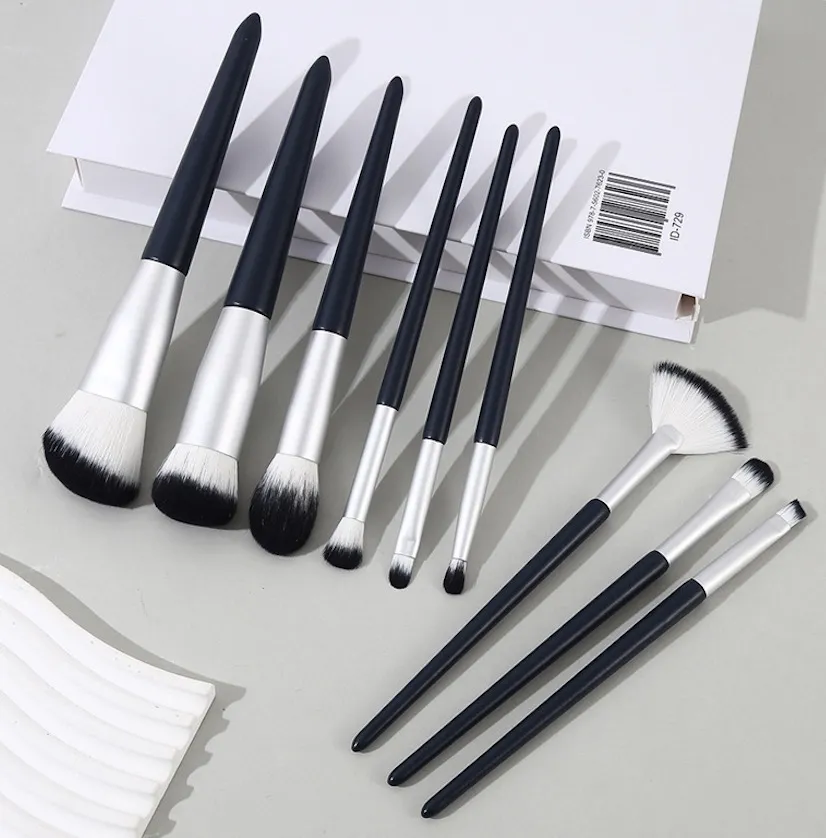Feeling lost in the endless options for makeup brushes online? You worry about getting fakes or tools that fall apart. I’ll show you exactly where to find brushes that deliver.
The best places to buy high-quality makeup brushes1 online are Sephora, Ulta, and official brand sites like Sigma or Hourglass. For Amazon, stick to brand-run storefronts. I recommend choosing synthetic bristles for liquids, and always clean your brushes weekly to ensure they last and perform well.

Navigating the online world of beauty tools can be tough. As someone who started on the factory floor, I’ve seen what separates a great brush from a bad one. It’s not just about the price tag. It’s about authenticity, materials, and how the tool is built. This guide isn’t just for shopping; it’s about making you a smarter buyer, whether you’re building your personal kit or sourcing for your own beauty brand. Let’s break down what you really need to know to invest wisely in tools that will perform beautifully for years.
High-performance makeup brushes can cost over $100 for a single brush.False
While some luxury brands are expensive, quality single brushes typically range from $6 to $72. For example, premium Hourglass brushes are around $45–$72, not over $100.
A 2025 study found that 81% of used makeup brushes contained Gram-positive bacteria.True
This data highlights the significant hygiene risk associated with poor brush maintenance and elevates the importance of regular cleaning.
Buy Smart: Where are the most reliable places to get top-tier brushes online?
Worried about buying counterfeit brushes online? Wasting money on fakes that shed and perform poorly is frustrating. Stick to these trusted channels, and you’ll get authentic, high-quality tools every time.
For guaranteed authenticity and easy returns, prioritize official brand websites2 like Hakuhodo and Sigma, or major beauty retailers like Sephora and Ulta. If you shop on Amazon, only buy from official brand stores or authorized sellers to avoid fakes.
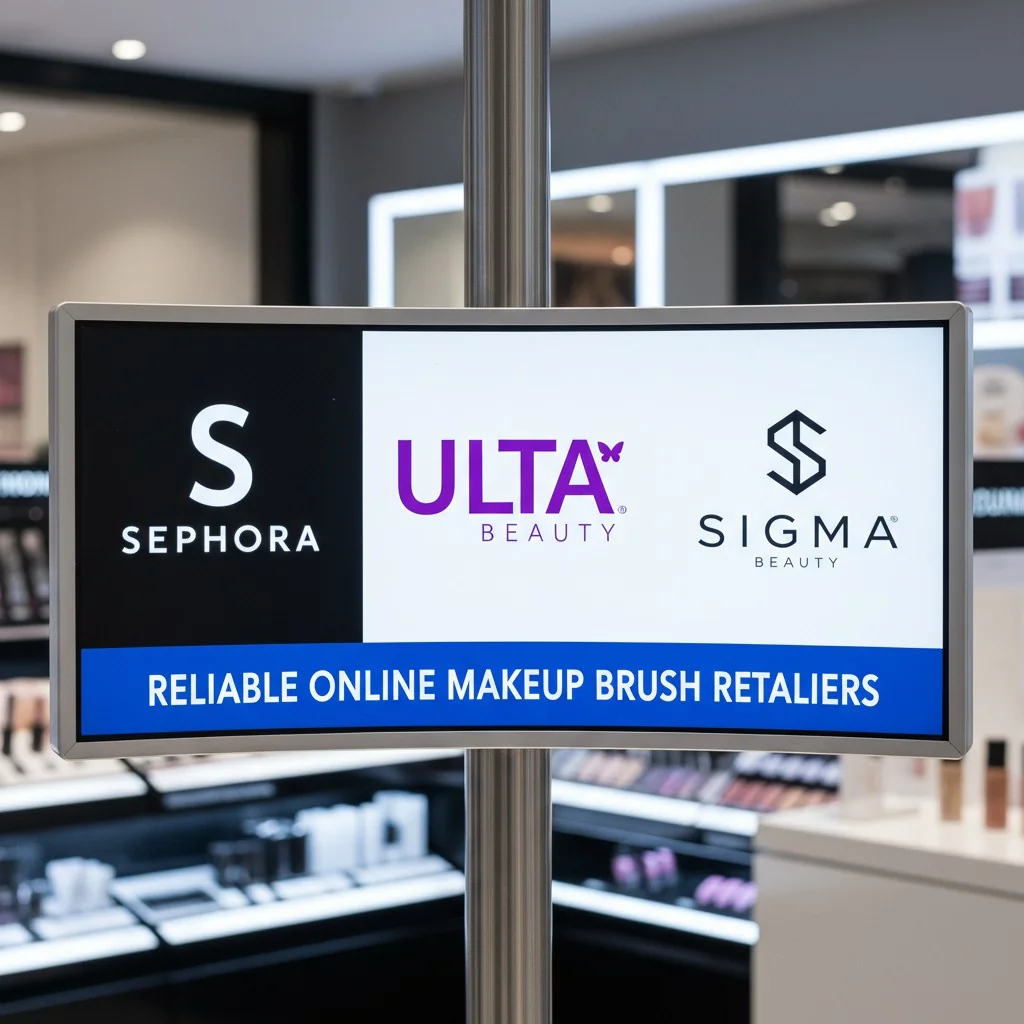
When I work with brand founders, the first thing we do is market research. We look at what’s selling and where. This tells us a lot about consumer trust. The retailers below are not just popular; they are trusted because they have systems in place to protect buyers from counterfeit products. This is crucial for both your personal use and for understanding the market if you’re building a brand. A retailer’s reputation is built on the authenticity of its products. For you, that means peace of mind. For a brand, it means a reliable sales channel.
Retailer Reliability Breakdown
| Retailer Channel | Best For | Authenticity & Returns | Pro-Tip |
|---|---|---|---|
| Sephora / Ulta | Access to top brands (Hourglass, Fenty, Patrick Ta), earning loyalty points, and easy in-store returns. | Highest level of trust. They are authorized dealers with direct brand partnerships. | Top-rated brushes from Byrdie and Wirecutter are almost always available here. |
| Brand Direct (DTC) | Exclusive sets, limited editions, and direct access to customer service and warranty claims. | Guaranteed authentic. You are buying directly from the source (e.g., Sigma, Hourglass). | Sign up for their newsletters. You’ll often get first access to new launches and sales. |
| Amazon | Value brands (Real Techniques, e.l.f.) and convenience, but requires careful vetting. | Risky unless you are careful. Counterfeits are common from third-party sellers. | Always check that the product is "Shipped by" and "Sold by" Amazon or the official brand storefront. |
You can trust any seller on Amazon for makeup brushes.False
Amazon's marketplace model allows third-party sellers, which increases the risk of counterfeit products. Always verify the seller is the official brand or an authorized dealer.
Sephora and Ulta are authorized retailers for major brush brands like Hourglass and Makeup by Mario.True
These major retailers have direct partnerships with brands, ensuring the products they sell are 100% authentic.
Brush quality 101: What actually matters with bristles, density, and build?
Confused by terms like "bristle density" or "synthetic fibers"? You just want a brush that applies makeup smoothly without streaks. I’ll break down the three factors that truly define a quality brush.
Focus on three things: the bristles, their density, and the handle’s build. High-grade synthetic fibers are best for liquids and creams. Good density ensures a smooth blend, and a well-weighted handle gives you better control during application.
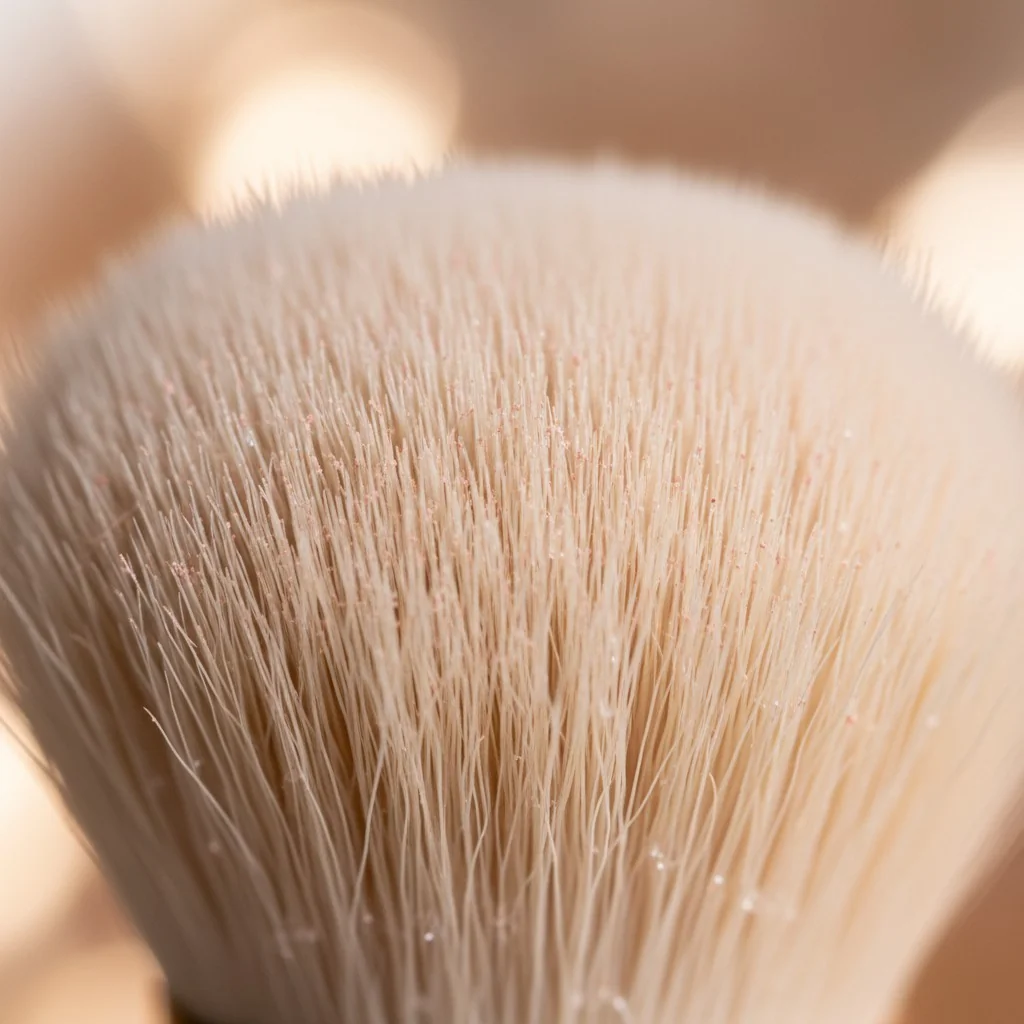
From my years in the factory, I can tell you that a brush’s performance comes down to its construction. It’s a science. The way the fibers are chosen, bundled, and secured makes all the difference between a streaky application and a flawless finish. We obsess over these details when creating brushes for brands, because we know this is what the end-user feels. A great brush feels balanced in your hand and does the work for you. Let’s look at the components that create that experience.
Bristle Science: Synthetic vs. Natural
Traditionally, natural hair (like goat or squirrel) was the standard for powders because its textured cuticle could pick up and distribute product well. However, modern technology has changed the game. High-performance synthetic fibers now rival, and often surpass, natural hair. For any liquid or cream product (foundation, concealer, cream blush), synthetic is non-negotiable. The fibers are non-porous, so they don’t absorb your makeup, meaning less waste and a smoother application. They are also far easier to clean and more hygienic, as they don’t trap moisture and bacteria like natural hair can.
Density and Shape: The Key to a Flawless Blend
Density refers to how many bristles are packed into the ferrule (the metal part). A very dense brush will pick up a lot of product and give you full coverage, which is great for foundation. However, as testers at InStyle noted, sometimes a slightly less dense, softer brush is better for avoiding streaks. The shape of the brush head is just as important. A domed shape is great for buffing, while a flat top is good for stippling, and an angled cut is perfect for contouring.
Handle and Ferrule: The Foundation of a Lasting Brush
A brush is a tool, and it should feel good to use. Testers at Wirecutter found that heavier, well-balanced handles actually improved control and maneuverability. The handle should be made of a durable material, like wood or resin, that won’t crack. The ferrule is the metal band that holds the bristles to the handle. It should be double-crimped to prevent shedding. If a brush starts losing bristles after the first few washes, it’s a sign of poor construction.
Natural hair bristles are always superior to synthetic bristles.False
Modern synthetic fibers are engineered to perform on par with or even better than natural hair, especially for liquid and cream products. They are also more hygienic and easier to clean.
Testers have found that a heavier brush handle can improve control during makeup application.True
A study by Wirecutter noted that heavier handles provided better balance and maneuverability, leading to a more controlled application.
Set vs single: When should you buy a kit and when should you pick hero brushes?
Wondering if you should buy a whole set or just one perfect brush? You don’t want to waste money on tools you’ll never use. Here’s a simple guide to help you decide.
Brush sets are economical for building a collection, but often include tools you don’t need. A curated 5-piece set is a great start. Buy single "hero" brushes to perfect a specific step, like your foundation or eyeshadow blending.
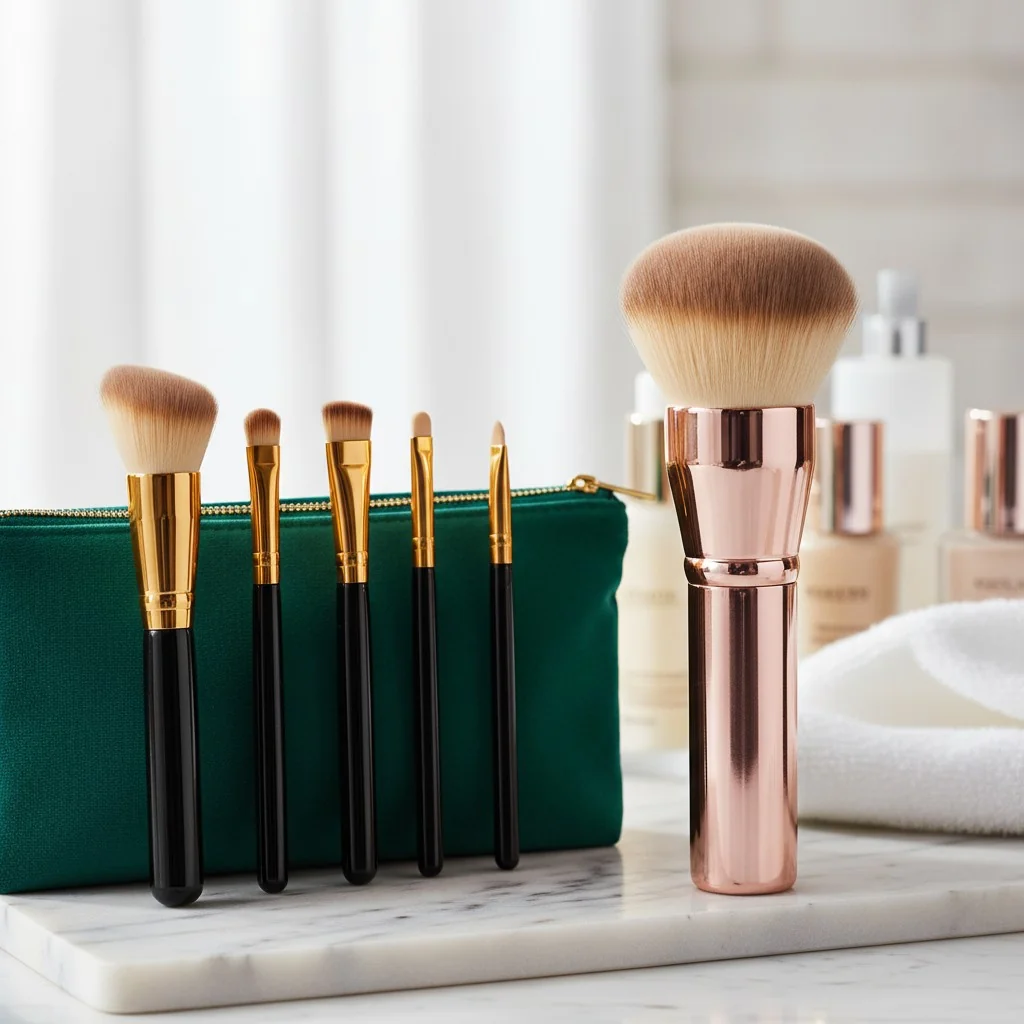
This is a classic dilemma, and the right answer depends entirely on your needs. When I advise new brands, we often discuss this strategy. Do they launch with a comprehensive set or a few must-have "hero" brushes? The answer helps define their brand identity and target customer. For your personal collection, the same logic applies. Are you starting from scratch, or are you looking to elevate a specific part of your routine? Thinking about it this way helps you build a functional, high-performance kit without waste.
A Persona-Based Guide to Buying
| User Type | Recommendation | Why It Works |
|---|---|---|
| The Beginner | Start with a small, curated set (3-5 pieces) like the Sigma Most-Wanted set. Add a large, fluffy powder brush separately. | A small set covers the essentials (foundation, concealer, eyeshadow) without overwhelming you. As Wirecutter noted, most sets lack a good powder brush, so buying one separately is a smart upgrade. |
| The Pro / Enthusiast | Invest in single "hero" brushes for specific tasks. | You already know what you like. Upgrade the tools you use most, like a high-end foundation brush (e.g., Hourglass Ambient Soft Glow) or a precision eyeliner brush. This allows for total customization. |
| The Brand Founder | Analyze both strategies. Offer a core "essentials" set and a few standalone "hero" brushes. | This strategy caters to both new and experienced customers. The set provides an easy entry point to your brand, while the hero singles appeal to enthusiasts looking to solve a specific problem. |
A large 20-piece brush set is the most economical choice for a beginner.False
While seemingly a good deal, large sets often contain many redundant or niche brushes that a beginner won't use, leading to waste. A smaller, curated set is more practical.
A good starter set, like the Sigma Most-Wanted, covers most essential needs but may require a separate powder brush.True
Comparative testing by sources like Wirecutter confirms that well-curated 5-piece sets are highly functional but often omit a large powder brush, which is a recommended additional purchase.
Hygiene and longevity: Why does cleaning frequency determine performance?
Your brushes get dirty, stop blending well, and maybe you’ve noticed skin issues. Dirty brushes can cause breakouts and ruin your makeup application. The solution is simple: consistent, proper cleaning.
A recent study found bacteria in over 80% of used brushes. To protect your skin and keep your brushes working perfectly, clean them weekly. Use a gentle cleanser and never soak the metal part.
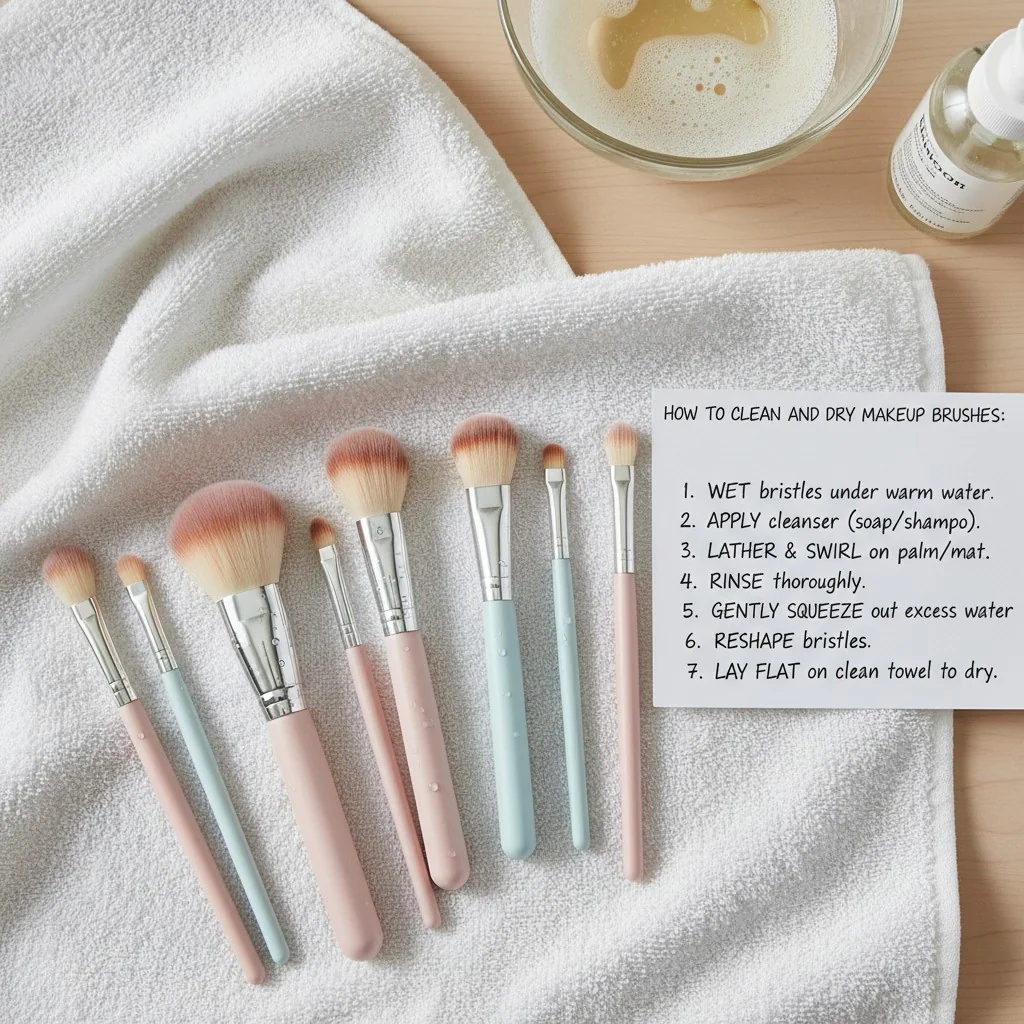
When I was first learning about brush making, the master craftsman told me, "A brush is only as good as its care." He was right. All the quality in the world doesn’t matter if the tool is caked with old product and bacteria. I was shocked when I read a 2025 study that found Gram-positive bacteria, including Staphylococcus, in 81% of used brushes. Even more concerning, 44.3% of users admitted they rarely clean their tools. This isn’t just an "icky" fact; it directly impacts your skin health and the performance of your expensive brushes.
The Real Risk of Dirty Brushes
The data is clear. That same study found that 27.8% of users reported skin issues they believed were linked to their tools. Bacteria, oil, and dead skin cells build up in the bristles, which can lead to clogged pores, acne, and irritation. From a performance standpoint, a dirty brush can’t pick up and distribute fresh makeup properly. It will cause streaky, muddy application and can alter the color of your products.
How to Clean Your Brushes Correctly
Routine cleaning is non-negotiable. It protects your investment and your skin.
- Wet the Bristles: Use lukewarm water, pointing the bristles downward to avoid water getting into the ferrule.
- Cleanse: Put a drop of gentle soap or brush cleanser into your palm. Swirl the brush tip in the soap to create a lather.
- Rinse: Rinse the bristles under running water until the water runs clear.
- Reshape and Dry: Gently squeeze out excess water, reshape the brush head, and lay it flat on a clean towel to dry overnight. Never dry your brushes upright, as water can seep into the handle and dissolve the glue.
This is why durability is so important. Testers consistently downrate brushes that shed or have flaking paint after a few washes. A well-made brush will withstand weekly cleaning for years.
It's only necessary to clean makeup brushes once a month.False
For daily users, dermatologists and makeup artists recommend cleaning brushes weekly to prevent the buildup of bacteria, oil, and dead skin cells that can cause skin issues.
Over 40% of makeup users rarely clean their brushes.True
A 2025 study of 370 users found that 44.3% reported rarely cleaning their brushes, highlighting a common gap in hygiene practices.
Conclusion
To find the best brushes, buy from trusted retailers, understand that quality synthetics are excellent, choose sets or singles based on your needs, and clean your tools weekly for your skin’s health.


